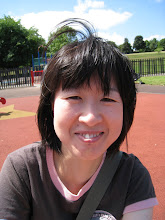The study of Language by George Yule (2006)
New words
Neurolinguistics: the study of the relationship between language and the brain
Broca’s area: a part of the brain in the left hemisphere involved in speech production
Wernicke’s area: a part of the brain in the left hemisphere involved in language comprehension
Motor cortex: a part of the brain that controls muscle movement
Localization view: the belief that specific aspects of linguistic ability have specific locations in the brain
Tip of the tongue phenomenon: the experience of knowing a word, but being unable to access it and bring it to the surface in order to say it
Malapropism: a speech error in which one word is used instead of syllables (e.g. medication used instead of ‘meditation’)
Slip of the tongue: a speech error in which a sound or word is produced in the wrong place, as in black bloxes (instead of ‘black boxes’)
Spoonerism: a slip of the tongue in which two parts of words or two words are switched, as in a dog of bag food (for ‘a bag of dog food’)
Slip of the ear: a processing error in which one word or phrase in heard as another, as in hearing great ape when the utterance was ‘gray tape’
Aphasia: an impairment of language function due to localizes brain damage that leads to difficulty in understanding and/or producing language
Broca’s aphasia: a language disorder in which speech production is typically reduced, distorted, slow and missing grammatical markers
Agrammatic speech: the type of speech without grammatical markers, often associated with Broca’s aphasia
Wernicke’s aphasia: a language disorder in which comprehension is typically slow while speech is fluent, but vague and missing content words
Anomia: a language disorder in which it is difficult to find words, often associated with Wernicke’s aphasia
Conduction aphasia: a language disorder associated with damage to the arcuate fasciculus in which repeating words or phrases is difficult
Arcuate fasciculus: a bundle of nerve fibers connecting Broca’s area and Wernicke’s area in the left hemisphere of the brain
Dichotic listening: an experiment in which a listener hears two different sounds simultaneously, each through a different earphone
Right-ear advantage: the fact that humans typically hear speech sounds more readily via the right ear
Lateralization (lateralized): divided into a left side and a right side, with control of functions on one side or the other (used in describing the human brain)
Critical period: the time from birth to puberty during which normal first language acquisition can take place
Study questions
1 Wernick’s area is a common name for the posterior speech cortex.
2 The use of ‘fire dintinguisher’ instead of ‘fire extinguisher’ is a malapropism.
3 Aphasia is an impairment of language function due to localized brain damage that leads to difficulty in understanding and/or producing linguistic forms.
4 Broca’s aphasia
5 In a dichotic listening, a person sits with a set of earphones on and is given two different sound signals simultaneously, one through each earphone.
6 The critical period is when the human brain is most ready to receive input and learn a particular language. It lasts from birth until puberty.
Subscribe to:
Post Comments (Atom)

No comments:
Post a Comment